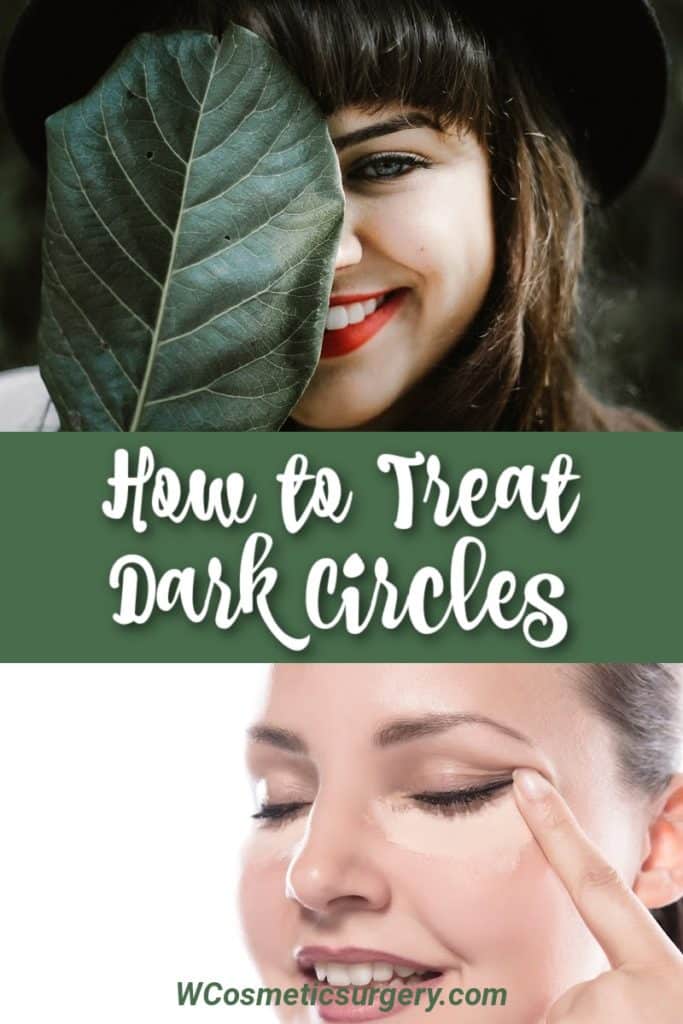
One of the most common questions I get—and that you see everywhere on the internet and on sites such as RealSelf is, “What do I do about the dark circles under my eyes?” Rarely the question is, “I have dark circles both under my eyes and above my eyes. What do I do about them?”
We see these patients all the time. They often end up obsessing about it—trying to make them as inconspicuous as possible by blending using tinted moisturizers, foundations, and concealers. I never go out without concealers is a typical quote—might work for a woman, but rarely for a man.
To address this problem comprehensively, we first should look at the causes.

What causes dark under-eye circles?
Dark circles can be seen in patients of certain nationalities and races. It is not uncommon at all to see this in patients with Mediterranean-type skin who are olive-complected. Individuals from the Middle East and Asia may also share this problem. In this instance, most of these dark circle issues are related to pigmentary differences in the skin around the eyes and in the rest of the face.

In other individuals who come to see us, other causes, if they are not pigmentary, are related to:
- Allergy. Frequent allergies of swelling under the eyes can produce a brawny, almost brownish discoloration to the skin. Food allergies can also be a cause, and if the darkness is intermittent, it might be worthwhile keeping a food diary or testing at an allergist’s office to see whether you have an allergy.
- Sinus disease. Problems with obstruction of the sinuses and bouts of sinus infections can also give rise to dark circles. Frequent sinus infections cause episodic swelling under the eyes which can result in a change in the consistency of the skin.
- Leaking, thin blood vessels or excess blood vessels. Some individuals have a bluish discoloration to the dark circles under the eyes. This relates to thinning of the skin that occurs over time and prominent blood vessels which supply the muscles and tissues around the eyelids. If the darkness gets worse with rubbing the eyes, many times this may be the cause of the darkness.

What do you do in the office to make the diagnosis?
In the office, we have an ultraviolet light called the Wood’s light which allows us to examine the pigment in the skin to see whether this is a pigmentary abnormality. It becomes apparent very quickly. We also have red-free light both in the Visia and Vectra systems—imaging systems that analyze the skin—that allow us to determine whether the problem is pigment-related.
Infrared light using the AccuVein vein visualization technology allows us to actually look at the vessels under the skin and helps us determine whether the problem is vascular. Usually a combination of these issues—pigment and vascular—can be at work—and treatment of both can improve the dark circles.

What do you do to treat this once you have arrived at the reasons for my dark circles?
Treating an underlying condition is very important. If you have allergies, it is important to determine what they are and to avoid the inciting allergen. Sinus problems deserve treatment either with an allergist or an ear, nose, and throat (ENT) specialist who deals with allergies.
For individuals with purely pigment-related dark circles, we have a variety of different bleaching treatments (5!) that we recommend that can work. They need to be used continuously. Photographs are obtained initially during your consult and in follow-up to assure us of your improvement.
We “step up” the process from gentle treatments to more aggressive bleaching treatments under and above the eyelids, always trying to do this in a logical step-wise fashion to cause little in the way of side effects. Rarely, patients with dark circles benefit from laser resurfacing.

The laser resurfacing can actually make dark circles worse, so it is important to pretreat and treat afterward with skin bleaching agents which can fade the pigment of the skin. Intense pulsed light can also work favorably in conjunction with bleaching agents to reduce pigment in the skin. A gentle chemical peel can also lighten the skin.
For patients with increased vascularity, oftentimes laser treatments to the small blood vessels including intense pulsed light or pulsed eye laser treatments can help fade some of the redness. Nowadays with mask-wearing in public, eye circles are much more apparent because all we see is the area around the eyes.
Regardless of the reason for the dark circles, there is a treatment that will benefit you. A consult with a dermatologist or an aesthetic plastic surgeon can help you address the problem and there is no need to hide under concealer!

